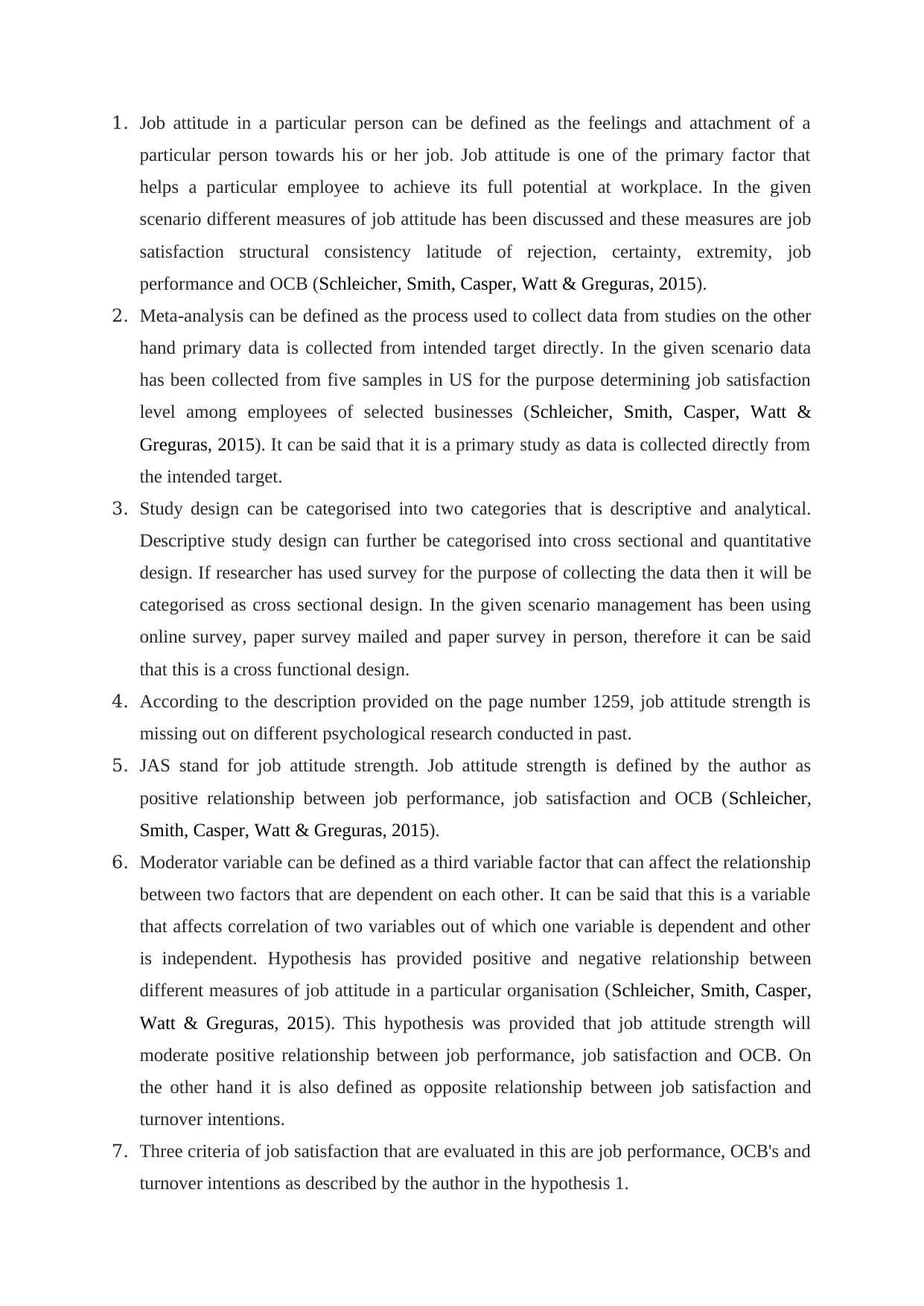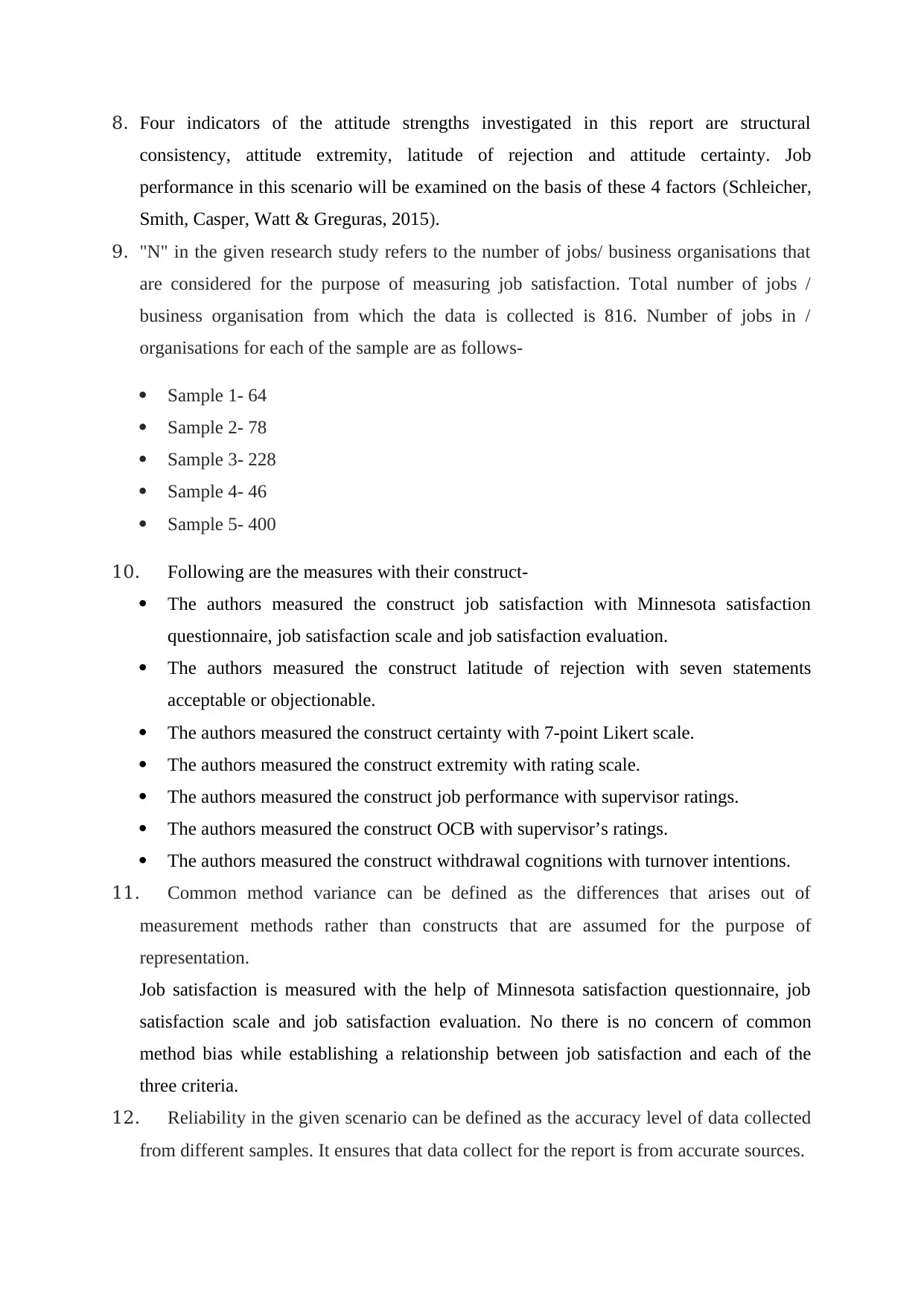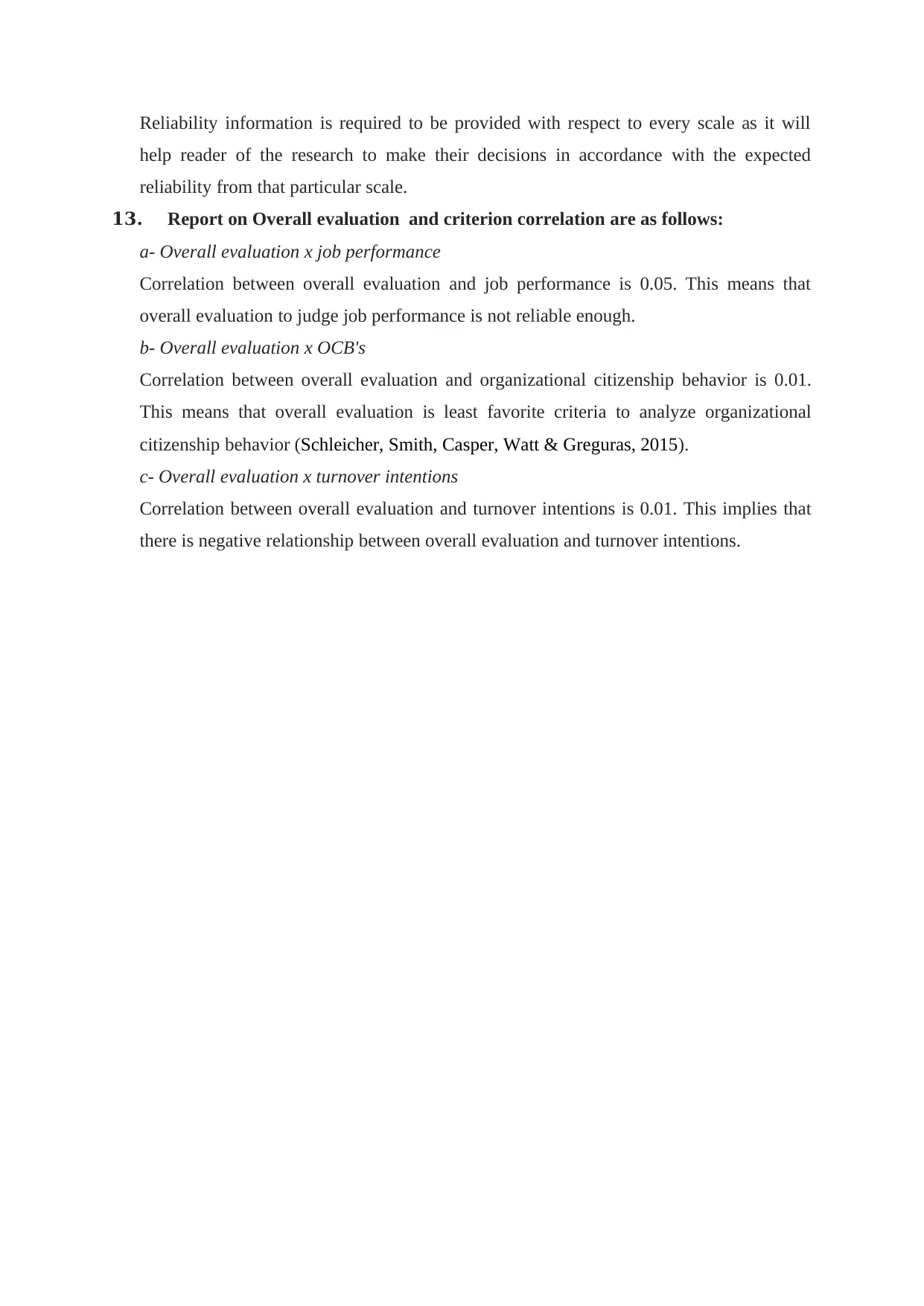PSYC 308: Organizational Psychology - Job Attitude Article Review
VerifiedAdded on 2022/10/10
|4
|1011
|190
Homework Assignment
AI Summary
This assignment analyzes a research article focusing on job attitudes within an organizational context. The study, conducted in the US across five samples, investigates various measures of job attitude, including job satisfaction, structural consistency, latitude of rejection, certainty, extremity, job performance, and OCB. It employs a cross-sectional design using online, mailed, and in-person surveys to collect primary data. The research explores job attitude strength (JAS) as a moderator of the relationship between job satisfaction and outcomes such as job performance, organizational citizenship behavior, and turnover intentions. The study examines indicators of JAS, including attitude certainty, extremity, latitude of rejection, and structural consistency. Data were collected from 816 jobs/organizations. The study also assesses the reliability of the measures and evaluates correlations between overall evaluations and job performance, OCB, and turnover intentions. The study finds a positive correlation between overall evaluation and job performance, but the correlation is not strong enough to be reliable. There is a negative correlation between overall evaluation and turnover intentions.
1 out of 4










![[object Object]](/_next/static/media/star-bottom.7253800d.svg)